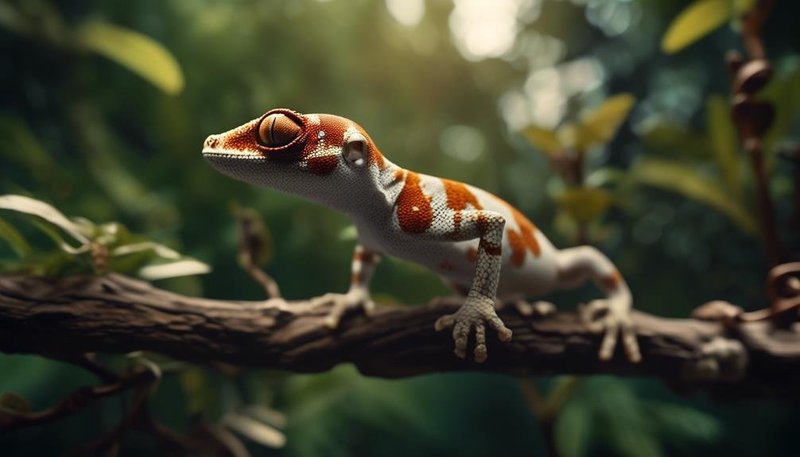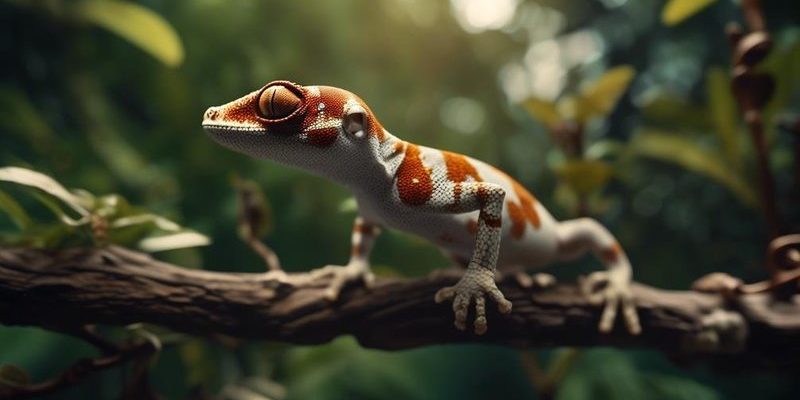
Let’s break down the evolutionary history of the crested gecko. We’ll explore where they come from, how they adapted to their habitats, and what makes them so special today. This journey is a colorful tapestry woven with ancient history, interesting traits, and the impact of their environments. Grab your favorite drink, and let’s dive into the world of the crested gecko!
Origins of the Crested Gecko
The crested gecko, scientifically known as *Correlophus ciliatus*, comes from New Caledonia, a group of islands in the southwest Pacific. The environment there is unique, with dense forests, rocky cliffs, and a warm, humid climate. Picture this: millions of years ago, a group of lizards found a cozy home in these islands. Over time, they adapted to their surroundings, leading to the distinct traits we see in crested geckos today.
These lizards were first discovered by the Western world in 1994, but they have an ancient lineage that predates this moment by many years. Fossil evidence suggests that their ancestors have existed since the Cretaceous period, approximately 145 to 66 million years ago. It’s incredible to think that this little creature has been around since the time of the dinosaurs!
Today, crested geckos are a popular choice for pet owners. Their friendly personalities and unique looks, complete with a fuzzy crest running from their head down to their backs, make them appealing. They’ve also been the subject of selective breeding, leading to a variety of colors and patterns, which is a fascinating twist in their evolutionary tale.
Adaptations to Their Environment
Crested geckos have made a name for themselves with some impressive adaptations. Think of them as nature’s little ninjas—silent, stealthy, and perfectly suited to their surroundings. One of their most notable features is their ability to climb. With specialized toe pads that let them grip smooth surfaces, they can scale trees and rocks with ease. This climbing ability helps them escape predators and hunt for food.
Their diet is another example of amazing adaptation. In the wild, crested geckos primarily feast on fruit, insects, and nectar. They have evolved to be a bit more flexible than other reptiles; they can ingest a variety of foods. When food is scarce, they can even slow down their metabolism. This trait is handy for surviving in an environment where resources might be unpredictable.
You might be wondering what other adaptations help them thrive. Crested geckos are also nocturnal, meaning they come alive at night. Their large eyes are designed for low-light conditions, allowing them to navigate through the dark while searching for food. This strategy not only reduces competition with other animals but also helps them stay safe from daytime predators.
Coloration and Camouflage
One of the most striking features of the crested gecko is its coloration. These lizards exhibit a rainbow of hues—everything from earthy browns and greens to vibrant yellows and reds. This variety is not just for show; it plays a vital role in their survival.
Camouflage is one of nature’s clever tricks. By blending into their surroundings, crested geckos can avoid detection from predators. Imagine a gecko resting against a tree trunk—its colors and patterns help it remain unseen. This ability to blend in is a crucial adaptation for any creature trying to stay safe in the wild.
In captivity, breeding programs have produced even more color variations. You’ll find crested geckos with bright patterns and stunning colors, appealing to pet enthusiasts worldwide. This selective breeding highlights not only the beauty of these creatures but also the incredible diversity found within a species. Their varied appearances can spark curiosity about evolution and the impact of human intervention on natural selection.
Conservation and Habitat Threats
Despite being popular in the pet trade, crested geckos face challenges in the wild. Their natural habitat in New Caledonia is under threat from deforestation, habitat destruction, and invasive species. As humans expand their activities, these lizards find themselves losing their homes, making conservation efforts critical.
Organizations are working to protect the unique ecosystems of New Caledonia. Preserving the habitats where these geckos thrive is essential for their survival. You might ask, “What can we do?” Supporting conservation initiatives and responsible pet ownership helps ensure that the crested gecko remains a part of our world.
Interestingly, some crested geckos have successfully adapted to living in urban areas. They can sometimes be found in gardens or green spaces, showing their resilience. However, while some can adapt, the overall threat remains significant. Creating awareness about their plight can foster a greater appreciation for these incredible lizards and the ecosystems they inhabit.
The Role of Crest in Communication
You might think that the crest on a crested gecko is just for looks, but it actually plays a role in their communication. This crest, which is a series of fleshy ridges along their heads and backs, can be important during social interactions.
When male crested geckos meet, they may use their crests to display dominance. A puffed-up crest can signal that they are strong and ready to defend their territory. Females might also use their crests in courtship displays, signaling their readiness to mate. This form of communication adds another layer to their social dynamics, showing that even small lizards have complex interactions.
Interestingly, scientists have studied how these visual signals work. The colors and sizes of their crests can indicate health and vitality, which is crucial for attracting mates. It’s a reminder that every little detail in an animal’s appearance can tell a story about its life, adaptations, and evolutionary history.
Captive Breeding and the Future
With the rise in popularity of crested geckos as pets, captive breeding has become more common. This process not only allows for the conservation of the species but also introduces pet owners to the wonders of these creatures. Breeding programs can help maintain genetic diversity while minimizing the pressure on wild populations.
Captive-bred crested geckos are often hardier than their wild counterparts. They adapt better to life with humans, making them a more suitable choice for families and beginners. Let’s be honest; who doesn’t love cuddling with a cute lizard? These geckos can live up to 20 years in captivity, so they become long-term companions.
However, it’s crucial for potential owners to educate themselves about proper care. Providing the right environment, diet, and social interaction is essential for keeping these reptiles healthy and happy. By understanding their needs, we can create a bright future for the crested gecko, both in homes and in the wild.
The evolutionary history of the crested gecko showcases not just their adaptability but also the delicate balance of nature. From their origins in the lush forests of New Caledonia to their vibrant presence in the pet trade, these lizards have a rich story to tell. As we learn more about them, we not only appreciate their beauty but also recognize the importance of preserving their natural habitats.
So, as you sip your coffee and ponder the wonders of evolution, remember the crested gecko’s journey. They are not just cute pets; they are survivors of a long evolutionary tale, reminding us of the importance of conservation and respect for the natural world. With each crested gecko, we witness a piece of history and a glimpse into the future of our planet’s biodiversity.

